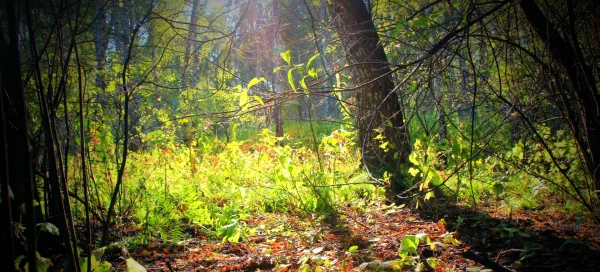Overview
The Striped Skunk is a mammal native to North America, known for its distinctive black-and-white coloration and its ability to spray a foul-smelling liquid as a defense mechanism. The species is highly adaptable and can thrive in various habitats, including forests, grasslands, and urban areas. The Striped Skunk is primarily nocturnal, foraging for food at night and spending the day in dens.
The species plays a vital role in controlling insect and small rodent populations, as it is an opportunistic feeder. It has a varied diet, including insects, small mammals, fruits, and plants. Despite its notorious reputation for pungent spray, the Striped Skunk is generally non-aggressive and avoids human interaction whenever possible.
Conservation efforts for the Striped Skunk are minimal, as it is not considered a threatened species. However, it does face some risks from habitat loss and road accidents. The species is also susceptible to diseases like rabies, which can threaten the skunk and other animals, including humans.
Taxonomy
Kingdom
Phylum
Class
Order
Family
Genus
Species
Type
Physical Description:
The Striped Skunk is easily recognizable by its black fur with a white stripe that runs from its head down its back and usually splits into two stripes along its tail. The species has a small, triangular head and short legs, which give it a low, elongated appearance. Its eyes are small, and it has a pointed snout, which is well-adapted for foraging.
Adult Striped Skunks typically weigh between 6 and 10 pounds, with males slightly larger than females. The body length can range from 13 to 18 inches, not including the tail, which can add 7 to 10 inches. The species does not exhibit significant sexual dimorphism, although males are generally slightly larger.

Lifespan: Wild: ~4 years || Captivity: `~10 years

Weight: Male: 8–10 lbs (3.6–4.5 kg) || Female: 6–8 lbs (2.7–3.6 kg)

Length: Male: 16–18 inches (41–46 cm) || Female: 13–16 inches (33–41 cm)

Height: Male: 7–9 inches (18–23 cm) || Female: 6–8 inches (15–20 cm)

Top Speed: 10 mph (16 km/h)
Characteristic:
Native Habitat:
The Striped Skunk is native to North America, highly adaptable, and capable of living in various habitats. It is commonly found in forests, grasslands, and agricultural areas but can thrive in suburban and urban environments. The skunk prefers areas with ample cover and access to water, and it often makes its den in hollow logs, under buildings, or in abandoned burrows.
The species is highly territorial, and individuals or family groups will establish a home range that varies in size depending on the availability of food and shelter. The Striped Skunk is generally a solitary animal but may share its territory with other skunks or species, provided there is no competition for food.
Climate Zones:
Biogeographical Realms:
Continents:
Countries:
Diet:
Diet & Feeding Habits:
The Striped Skunk is an opportunistic omnivore, feeding on various foods. Its diet primarily consists of insects, small mammals, fruits, and plants. The skunk uses its keen sense of smell and sharp claws to dig for grubs and other insects, which comprise a significant portion of its diet.
Foraging activities are generally nocturnal, although the skunk may venture out during the day if food is scarce. It has a high metabolic rate and needs to eat frequently. The Striped Skunk often forages alone but may also participate in communal foraging, especially when food is abundant.
Mating Behavior:
Mating Description:
The Striped Skunk has a polygynous mating system, with males mating with multiple females during the breeding season. The breeding season occurs from late February to early April, and males travel long distances to find mates. Courtship behaviors include vocalizations and scent markings, and fights between males are common during this period.
After mating, the female will prepare a den where she will give birth to a litter of 4 to 7 young after a gestation period of about 60 to 75 days. The young are born blind and helpless but develop quickly, opening their eyes after about three weeks and venturing out of the den after two months. Both parents participate in rearing the young, although the male may leave after the birth.
Reproduction Season:
Birth Type:
Pregnancy Duration:
Female Name:
Male Name:
Baby Name:
Social Structure Description:
The Striped Skunk is generally a solitary animal but may form loose social groups, particularly in the winter when it is advantageous to share body heat. The species is highly territorial, and individuals or family groups will establish a home range that varies in size depending on the availability of food and shelter. Scent markings are used extensively to establish and maintain territories.
During the breeding season, the social structure becomes more complex, with males traveling long distances to find mates and engaging in fights to establish dominance. After the birth of the young, both parents participate in rearing the offspring, although the male may leave after the birth. The young will stay with the mother until they are old enough to establish their territories.
Groups:
Conservation Status:
Population Trend:
The Striped Skunk is not considered a threatened or endangered species, and its population is generally stable across its range. It is a common and abundant species in many areas, particularly protected reserves and national parks. The species is highly adaptable and has successfully colonized various habitats, including suburban and urban areas.
Despite its abundance, the Striped Skunk faces some threats, primarily habitat loss and road accidents. It is also susceptible to diseases like rabies, which can significantly impact local populations. However, these threats are not severe enough to warrant significant conservation concerns.
Population Threats:
The primary threats to the Striped Skunk population include habitat loss due to agricultural expansion and urban development. Road accidents are another significant cause of mortality, particularly where roads intersect with natural habitats. The species is also susceptible to diseases like rabies, which can have a significant impact on local populations and pose a threat to other animals and humans.
Chemical pesticides and rodenticides can also pose a threat, as the skunk may consume poisoned prey. Public perception of the skunk as a pest can also lead to unnecessary culling. However, these threats are generally localized and do not significantly risk the overall population.
Conservation Efforts:
Conservation efforts for the Striped Skunk are minimal, as it is not considered a threatened species. However, some measures are in place to protect its habitat and reduce road accidents. Wildlife corridors and underpasses have been constructed in some areas to allow safe passage across busy roads. Public awareness campaigns are also in place to educate people about the ecological importance of the species and how to coexist peacefully.
Monitoring programs are in place to track population trends and assess the impact of diseases like rabies. These efforts are crucial for understanding the species’ ecology and implementing effective conservation strategies, should the need arise.
Additional Resources:
Fun Facts
- The Striped Skunk can spray its foul-smelling liquid up to 10 feet.
- It is one of the most recognizable mammals in North America due to its distinctive coloration.
- The species is highly adaptable and can live in a variety of habitats.
- Despite its reputation, the Striped Skunk is generally non-aggressive and avoids human interaction.
- It plays a vital role in controlling insect and small rodent populations.
- The Striped Skunk is primarily nocturnal but may be active during the day if food is scarce.
- The species has a high metabolic rate and needs to eat frequently.
- It is susceptible to diseases like rabies, affecting pets and humans.
- The Striped Skunk is polygynous, with males mating with multiple females during the breeding season.
- Despite its general abundance, the species faces some threats from habitat loss and road accidents.












